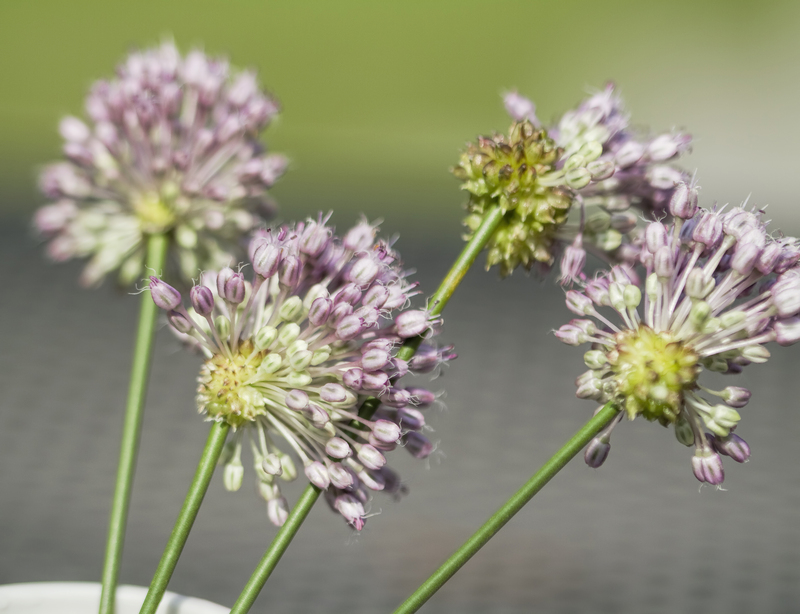Eco-Friendly Gardening: A Step Towards Climate Preservation
Posted on 02/09/2025
Eco-Friendly Gardening: A Step Towards Climate Preservation
Eco-friendly gardening is more than just a trend; it's a crucial revolution in how we interact with our natural environment. As concerns over climate change grow globally, individuals, families, and communities are exploring how small adjustments--like adopting sustainable gardening practices--can significantly impact climate preservation. Whether you are a seasoned gardener or a budding enthusiast, transitioning towards an environmentally responsible garden can play a key role in safeguarding our planet's health.
Why Eco-Friendly Gardening Matters for Climate Preservation
The global climate crisis demands collective action. Eco-friendly gardening provides a practical, accessible, and meaningful way for individuals to participate in climate preservation. But what makes garden sustainability so vital?
- Carbon Sequestration: Healthy plants and rich soils store carbon dioxide, a main greenhouse gas, reducing its concentration in the atmosphere.
- Biodiversity Support: Using native plant varieties and eliminating chemical pesticides helps nurture local birds, bees, and other essential pollinators.
- Reducing Urban Heat: Green spaces cool their surroundings, combating the urban heat island effect common in cities.
- Water Conservation: Eco-friendly gardens use resources wisely, preserving water and preventing runoff pollution.
Gardening sustainably offers a chain reaction of ecological benefits, making each homegrown carrot or pollinator-friendly flower a bold step towards climate impact reduction.

Eco-Conscious Gardening Practices: Foundations and Philosophy
Understanding the Principles of Sustainable Gardening
At its core, eco-friendly gardening strives to work in harmony with nature rather than against it. Key principles include:
- Maintaining healthy soil biology without synthetic additives
- Encouraging biodiversity with native and adaptive plants
- Conserving water with smart irrigation choices and mulching
- Reducing waste by composting and recycling garden materials
- Minimizing chemical use to protect ecosystems
- Fostering wildlife habitats and pollinator corridors
By integrating these guiding values, the home garden transforms from a decorative space into an active partner in the fight against climate change.
The Benefits of Organic Practices for the Environment
Organic gardening lies at the heart of eco-conscious horticulture. Here's why:
- It eliminates harmful synthetic fertilizers and pesticides, reducing pollution.
- Boosts soil fertility and structure through natural amendments.
- Supports beneficial insects and microorganisms essential for plant health.
- Helps produce healthier, more nutritious crops for humans and wildlife.
By switching to organic methods, everyone can contribute to a healthier ecosystem--locally and globally.
Steps to Creating an Eco-Friendly Garden
1. Choose Native and Climate-Appropriate Plants
Start with a simple step: select native plant species or those well-suited for your region's climate. These plants require less water, fertilizers, and pesticides, thriving with minimal intervention.
- Research native plant lists for your area from local botanical gardens or extension agencies.
- Group plants with similar sunlight and moisture needs to save resources.
- Foster a mix of trees, shrubs, flowers, and groundcovers for year-round ecological interest.
Remember: Native plants are the foundation of biodiversity-rich and low-maintenance landscapes.
2. Build Healthy Soil Organically
Soil health is central to climate-friendly gardens. Organic matter, such as compost, enriches garden soil naturally--boosting its water retention, aeration, and nutrient content.
- Apply homemade or locally sourced organic compost to vegetable beds and flower borders regularly.
- Mulch soil with straw, bark, or leaf litter to lock in moisture and suppress weeds.
- Avoid harmful chemical fertilizers; opt for slow-release, organic soil amendments.
Healthy soil not only nurtures plants but also captures atmospheric carbon, helping to offset greenhouse gas emissions.
3. Embrace Water-Wise Gardening
Water conservation is an essential component of eco-friendly gardening, especially in drought-prone regions.
- Install drip irrigation or soaker hoses to target plant roots and reduce evaporation.
- Harvest rainwater in barrels for use during dry periods.
- Choose drought-tolerant varieties, and water only when plants need it.
- Group plants by their water requirements to reduce excess use.
Every drop saved helps sustain our freshwater resources and decreases the energy used for water processing.
4. Composting: Turning Waste Into Gold
Composting is a vital sustainable gardening technique. By recycling food scraps, lawn trimmings, and leaf litter, you reduce landfill waste and create valuable garden amendments.
- Set up a basic compost bin or pile in a shady garden corner.
- Layer green materials (fruit and veg scraps, grass) with brown sources (twigs, dried leaves).
- Turn your compost regularly and keep it moist--not soggy--for faster decomposition.
- Finished compost can be sprinkled on beds and around trees to nourish soil naturally.
Composting closes the nutrient loop, returning valuable organic matter to your landscape instead of the landfill.
5. Use Natural Pest Control Methods
Avoid synthetic pesticides by encouraging a balanced garden ecosystem where beneficial insects thrive.
- Plant insect-attracting flowers such as marigolds, yarrow, or dill around vegetables for natural pest control.
- Encourage birds with water features and nesting boxes to keep insect populations down.
- Hand-pick visible pests and use neem oil or insecticidal soap when necessary.
- Maintain tidy but not overly manicured spaces to provide habitat for predatory beetles and spiders.
Biological pest control creates a resilient, low-chemical garden and fosters greater species diversity.
6. Recycle and Repurpose Garden Materials
Cut down on waste and reduce your carbon footprint by reusing and recycling around the garden.
- Turn old containers, barrels, and even boots into creative plant pots.
- Use stone or reclaimed timber for paths and edging, instead of new materials.
- Repair or repurpose broken tools and fences whenever possible.
This approach demonstrates how sustainable gardening can inspire innovation and resourcefulness.
7. Design for Wildlife and Pollinator Support
Your garden can become a crucial habitat for bees, butterflies, birds, and other wildlife--many of which are under threat from climate change and habitat loss.
- Grow a variety of flowering plants for season-long nectar and pollen.
- Leave some areas "wild" with logs, leaf piles, or dense shrubs for shelter.
- Install birdbaths, bee hotels, and insect-friendly features.
- Avoid pesticides that endanger beneficial species.
By supporting pollinators and native wildlife, your garden becomes a lifeline for biodiversity.
Innovative Trends in Eco-Friendly Gardening
As environmental awareness grows, so does the field of sustainable gardening. Consider introducing these progressive practices:
- Permaculture Designs: Mimics natural ecosystems, improving resilience and yield.
- No-Dig Gardening: Minimizes soil disturbance, thus preserving microbial life and carbon storage.
- Rain Gardens: Collects runoff and improves water table health.
- Vertical and Rooftop Gardens: Expands greenery in urban environments for improved air quality and cooling.
- Edible Landscaping: Mixes vegetables and fruit with ornamentals, maximizing food production in small spaces.
Integrating these ideas helps take your climate-friendly gardening to the next level.
Overcoming Challenges in Climate-Smart Gardening
Switching to an eco-conscious garden may pose some hurdles and learning curves, but the rewards far outweigh the obstacles.
Common Concerns and Solutions
-
Lack of time?
Start small--focus on one garden bed or a few pots, gradually expanding your methods and knowledge. -
Pest issues?
Healthy, diverse gardens are less prone to infestations. Attract natural predators and avoid chemical quick fixes. -
Cost of initial transition?
Composting, seed-saving, and recycling all help reduce costs over time, making eco-friendly gardening affordable in the long run. -
Lack of gardening experience?
There are countless local workshops, online resources, and community groups dedicated to sustainable gardening.
Remember: Every small action, even if imperfect, makes a difference in defending our planet's climate.
How Eco-Friendly Gardening Fights Climate Change
The connection between sustainable gardening and climate preservation is powerful:
- Gardens capture carbon and reduce atmospheric CO2.
- They support species threatened by climate change, including pollinators essential for our food systems.
- They cool urban areas, reduce flooding, and filter air and water of pollutants.
- They promote local food production, shrinking carbon footprints by reducing transportation and packaging emissions.
A single garden may seem small, but when combined on a community and global level, eco-friendly gardening becomes a potent force for climate action.
The Role of Community in Sustainable Gardening
Eco-friendly gardening is most effective when shared. Community projects, garden clubs, and neighborhood initiatives amplify the impact.
- Community gardens bring fresh food and greenery to urban environments.
- Shared composting and rainwater harvesting make advanced techniques accessible to all.
- Educating youth and neighbors spreads climate-smart gardening for generations to come.
- Working together builds resilience, skills, and stronger connections within neighborhoods.
Green spaces unite us--for a healthier, cooler, and more sustainable future.

Conclusion: Planting Seeds for a Sustainable Future
Choosing eco-friendly gardening is a powerful, joyful step toward climate preservation. By nurturing soil, conserving water, embracing biodiversity, and reducing chemical use, sustainable gardening transforms individual landscapes into climate action hubs. When multiplied around the globe, these gardens become a network of hope and healing--acting as carbon sinks, biodiversity reserves, and educational centers.
Let your garden grow--with conscience, care, and creativity--and contribute to a brighter, more sustainable planet for generations to come.
Frequently Asked Questions (FAQs) on Eco-Friendly Gardening and Climate Preservation
-
What is eco-friendly gardening?
Eco-friendly gardening uses sustainable, organic, and resource-efficient practices to protect the environment and help mitigate climate change. -
Can small gardens really make a difference?
Yes! Each garden supports local wildlife, captures carbon, and serves as a model for sustainable living--adding up to significant impacts globally. -
Is eco-friendly gardening expensive?
While some upfront investments are possible, most sustainable methods help save money through water conservation, composting, and lower input costs. -
Where can I learn more about sustainable gardening?
Check with local horticulture societies, environmental groups, or search for eco-friendly gardening resources online and in public libraries.
Take the first step today--transform your outdoor space with climate-friendly gardening and help nurture a healthier planet, one seed at a time.



